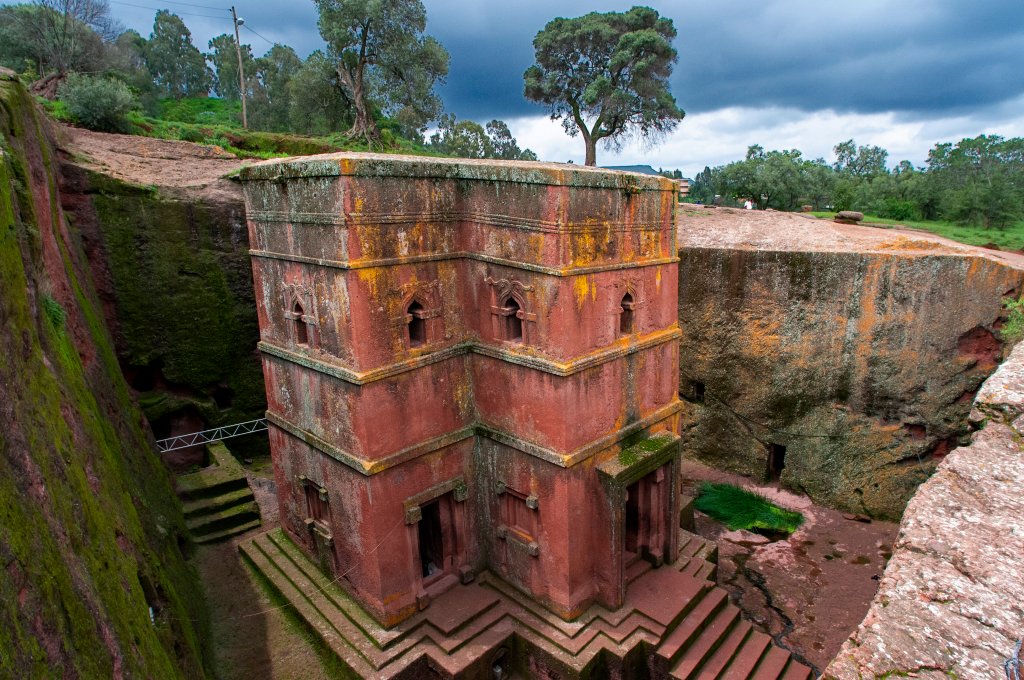 Monolithic rock-cut Church of St. George in the UNESCO World Heritage Site Lalibela. Sergi Reboredo/picture-alliance/dpa/AP Images
Monolithic rock-cut Church of St. George in the UNESCO World Heritage Site Lalibela. Sergi Reboredo/picture-alliance/dpa/AP Images
Rebels from Ethiopia’s embattled Tigray region have taken control of Lalibela, a UNESCO World Heritage Site famed for its 12th- and 13th- century monolithic rock-hewn churches.
Lalibela is a site of pilgrimage for millions of Ethiopian Orthodox Christians. Around 250,000 people have fled the region since November after war broke out between the national army and forces from the Tigray People’s Liberation Front (TPLF).
The Ethiopian Prime Minister, Abiy Ahmed, sent troops to Tigray to quell the rebellion by the TPLF, which had controlled the country for three decades until Ahmed took power in 2018. Forces from nearby Eritrea have joined Ahmed in the country’s fight against the TPLF.
In recent weeks, fight for control of the north Ethiopian state of Tigray has expanded to the neighboring regions of Afar and Amhara, where Lalibela is located. United Nations aid chief Martin Griffiths has stated that more than 5.2 million people across the state are facing starvation. He called on both sides to allow humanitarian services to intervene.
The deputy mayor of Lalibela, Mandefro Tadesse, told the BBC that he fears for the safety of the historic churches. “This is the world’s heritage, and we must cooperate to guarantee that this treasure is preserved,” Tadesse said.
The 11 churches in Lalibela were chiseled in the medieval period from monolithic blocks of rock in the mountainous region of Ethiopia. According to according to UNESCO, “their building is attributed to King Lalibela who set out to construct in the 12th century a ‘New Jerusalem,’ after Muslim conquests halted Christian pilgrimages to the holy Land. Lalibela flourished after the decline of the Aksum Empire.”
The news comes amid growing evidence that heritage sites across the region are being targeted during a prolonged battle, in what international experts have warned is a “cultural cleansing.” A deacon at the Church of St Mary of Zion, the country’s most sacred Ethiopian Orthodox Church, told the Associated Press that, on November 28, Eritrean soldiers stormed the church during a service and opened fire on hundreds of congregators. According to the report, over 800 Ethiopians were murdered after gunfire spilled into the streets.
The 6th-century Debre Damo monastery in Tigray was bombed and looted of its treasures by Eritrean soldiers. Centuries-old manuscripts and other historically significant objects were taken from the monastery’s holdings while the monks’ historic dwellings were destroyed.
“There are reports of looting of manuscripts from Tigrayan churches and monasteries, and warnings that they will sooner or later be taken out of Ethiopia to be sold at antiquities markets in other countries,” a group of experts from the Hiob Ludolf Centre for Ethiopian and Eritrean Studies in Hamburg, Germany, said in a public appeal in January. “It is beyond any doubt that the conflict is causing heavy damage to the cultural heritage, but since most communication lines remain cut off and the information coming from the region is minimal, it is difficult to assess the real scope of the losses.”
Source link : https://www.artnews.com/art-news/news/rock-hewn-churches-ethiopia-tigray-conflict-1234601045












